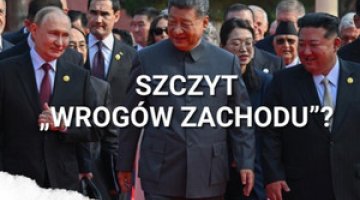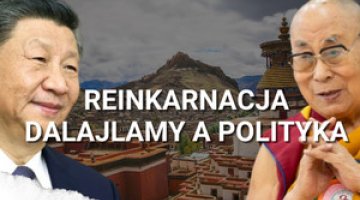Reassurance, but no breakthrough. The Sino-US summit in San Francisco
On 15 November, Chairman Xi Jinping and President Joe Biden met on the sidelines of the Asia-Pacific Economic Community Summit in San Francisco. The parties issued separate statements indicating that the leaders had agreed to resume high-level military communications within the framework of the U.S.-China Defense Policy Coordination Talks as well as meetings of the bilateral Military Maritime Consultative Agreement. They also agreed that direct telephone contacts could be made between the commanders of the respective operational theatres, and decided to establish a working group on cooperation in the war against drugs. They further agreed to strengthen dialogue and cooperation in various areas, including the initiation of intergovernmental talks on artificial intelligence. They also announced efforts to increase the number of passenger flights between the two countries and to expand educational, student, youth, cultural, sporting and economic exchanges.
The two sides’ communiqués emphasised the importance of working together to address the climate crisis, including on domestic action to reduce emissions later this decade, and on devising a joint approach to the work of the United Nations Climate Change Conference (COP28). At a press conference following the talks, President Biden said the leaders had agreed to maintain constant telephone communication.
Commentary
- The San Francisco summit took place after months of diplomatic efforts. Xi Jinping’s failure to attend the G20 summit in India in September was motivated, among other things, by his unwillingness to meet with Biden. Since then, however, Beijing has sent numerous signals (including letters to various Sino-US organisations from Chairman Xi Jinping himself) that it was interested in talks. These steps appear to have been dictated by several considerations. First is the PRC’s difficult economic situation (see ‘Disappointing post-COVID-19 recovery. China on the path of a protracted slowdown’): in the context of a rapprochement, cooling down the international temperature could translate into an improvement in the global economy, and thus an increase in Chinese exports. Also, the subsequent purges within the People’s Liberation Army, which has included the removal of the defence minister and a number of commanders, means that Beijing is not currently ready to carry out any kind of military escalation. The prospect of Donald Trump winning next year’s presidential election is also potentially significant. The PRC’s leaders would therefore prefer to stabilise relations with the Americans ahead of a possible change in the White House, and given the US election campaign calendar, the San Francisco summit was the last possible opportunity to do so.
- Similar motivations are behind the US’s push for the meeting. As the Biden administration moves into the pre-election period, it is keen to regularise relations with its main adversary so that it can focus on domestic issues. Biden will want to show during his campaign that he is actively trying to curb the flow of fentanyl into the US (the source materials for its manufacture reach the Mexican drug cartels from China), and to be credible he needed a reciprocal gesture of some kind from Xi Jinping. The international economic situation, which also affects the state of the US economy, is also important. This is why Washington sought a meeting back in June (see ‘Blinken in Beijing: stabilisation with no prospects for a breakthrough’), after which several representatives of the US administration visited the PRC (see ‘Dialogue to maintain dialogue. The US Secretary of Commerce visits China’).
- The meeting gave the Chinese side the chance to re-articulate its accusations and expectations of the US. While these demands are ritualistic in nature, they remain an important element of Beijing’s confrontational stance. Xi Jinping has outlined a principled position regarding Taiwan. He has indicated that the issue remains the most important and sensitive of the many issues in Sino-US relations, and has stated that China expects the US to stop supplying arms to the island. Beijing interprets any interaction with the Taiwanese authorities as supporting the island’s independence. Beijing’s second fundamental grievance is the US system of export controls, especially on high-tech exports; these are seen as an attack on China’s “legitimate interests” and as an effort to “deprive the Chinese people of their right to develop”. The leadership of the PRC is trying to address the exhaustion of the previous development model, which was based on infrastructure investment and exports, by betting on the more innovative sectors of the economy. For this reason, they perceive American moves to restrict the PRC’s access to new technologies as directly targeting the foundations of the Communist regime’s stability. Beijing also regards as hostile both Washington’s support for its allies in the East Asian region in disputes with the PRC and the principled US stance on freedom of navigation and compliance with UNCLOS, the United Nations Convention on the Law of the Sea (see Nine dashes. Beijing’s territorial claims in the South China Sea). Similarly, China sees any discussion of defending human rights in mutual relations as interference in its internal affairs and a violation of its sovereignty.
- The US side considers Beijing’s actions in the South China Sea and East China Sea as not only illegal under international law, but also as destabilising to the region. While the Biden administration has emphasised that the US expects “cross-strait differences to be resolved by peaceful means, and [believes] that the world has an interest in peace and stability in the Taiwan Strait”, the reality is that Washington cannot allow Beijing to take control of Taiwan without severely compromising its position both regionally and globally (see The silicon shield. Taiwan amid the superpowers’ rivalry). The Americans stress that human rights are universal, and that all states have a responsibility to respect their international obligations in this regard. Therefore, during his meeting with Xi Biden explicitly expressed concerns about human rights violations in the PRC, including in East Turkestan (Xinjiang), Tibet and Hong Kong. In addition, the US has for years accused Beijing of unfair trade practices and the extra-legal harassment of US companies. From Washington’s perspective, on the other hand, the technology export controls are a necessary tool to prevent the use of advanced US-created technologies to build weapons systems that can be used against US forces. The issue of some 200 US citizens who have been unlawfully detained or prevented from leaving China also remains unresolved.
- The summit confirmed the fundamental nature of the Sino-US rivalry and the two countries’ mutually exclusive strategic ambitions. Their aim in the short to medium term appears to be to stabilise relations by maintaining dialogue and pragmatic cooperation in those areas where this is possible, including trade, finance, arms control and non-proliferation, climate change and food policy. For Beijing, this represents a return to the policy initiated at the G20 summit in Indonesia in 2022 (see ‘A tactical pause in relations with the West: China plays on hopes for peace’). The most important thing for both partners is to create a mechanism which can prevent the potential escalation of military incidents. From this perspective, it is important to re-establish military contacts, especially the direct line of communication between the commanders of the respective operational areas. However, how this mechanism is put into practice will be key: the Philippines has a similar mechanism in place with the PRC, but in crisis situations the Chinese side ‘doesn’t pick up the phone’. The situation with other issues is similar: only time will tell to what extent Washington and Beijing will be willing (or able) to deescalate emerging tensions. Despite these caveats, we may say that a relative calm should prevail in Sino-US relations in the run-up to next November’s US presidential election.





